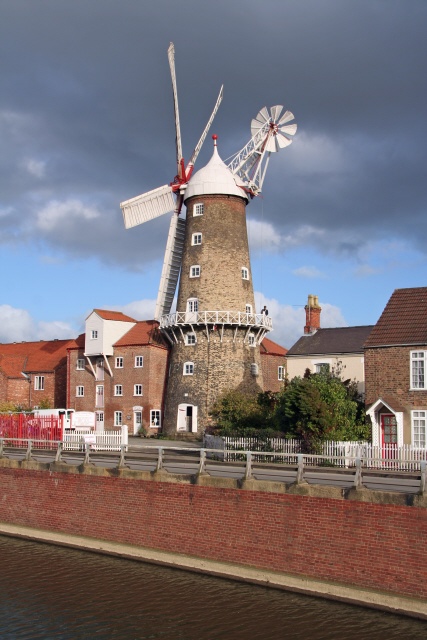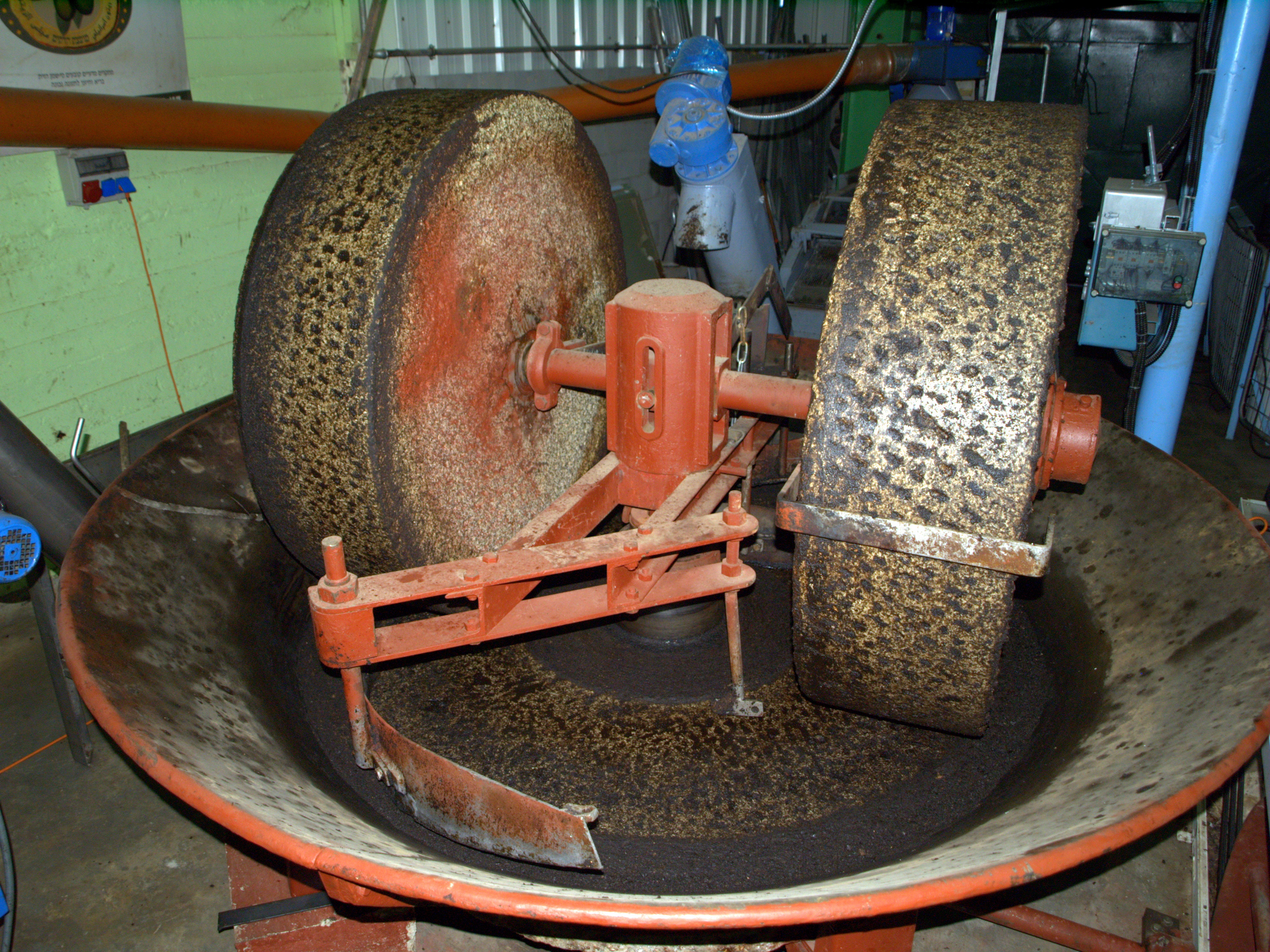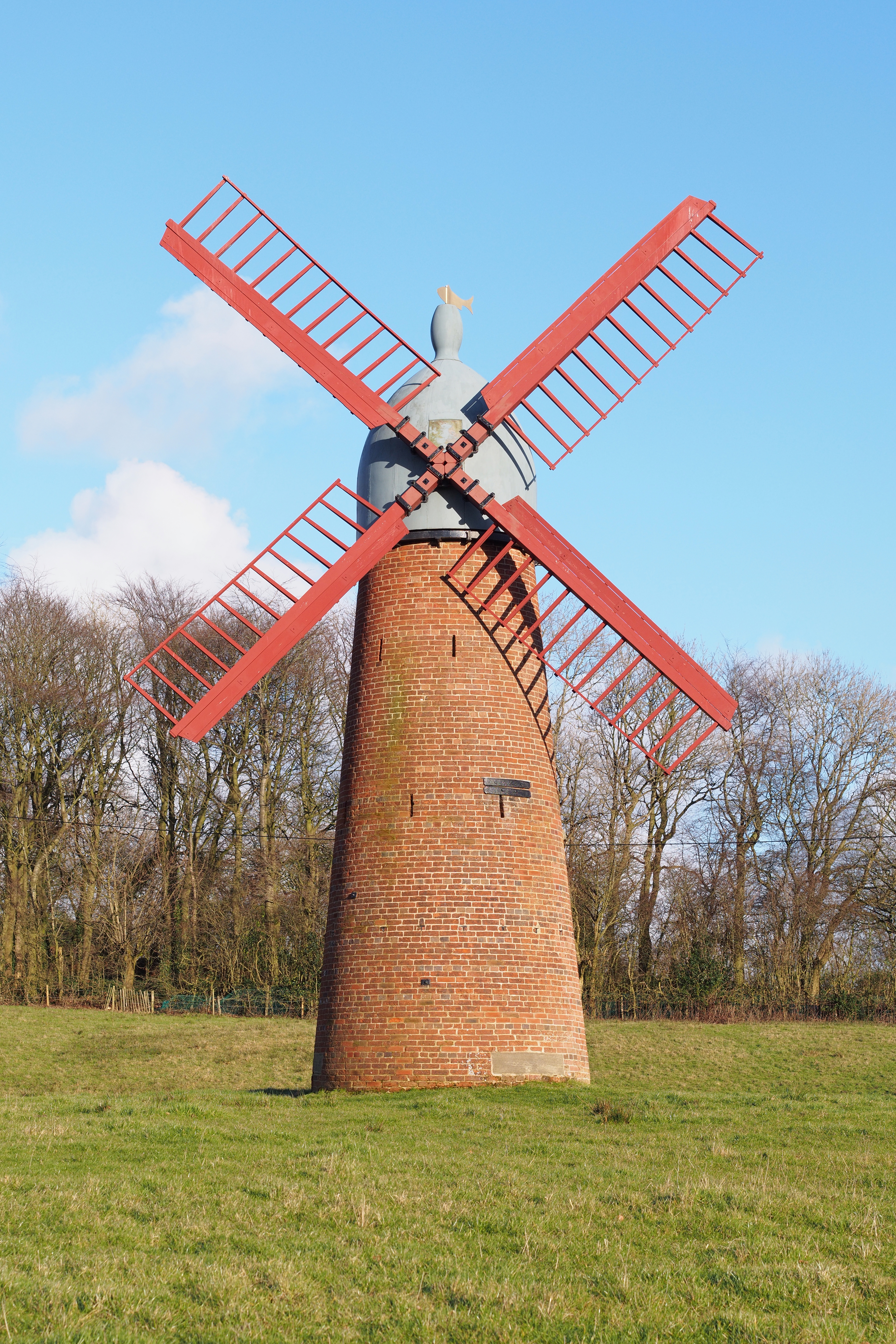|
Mill Machinery
This glossary of mill machinery covers the major pieces of machinery to be found in windmills, watermills and horse mills. It does not cover machinery found in modern factories.* covers most entries* covers ''Buck'', ''Crown Tree'', ''Pintle'', ''Samson Head'' Watermill machinery ;Axle :The ''axle'' carries the ''waterwheel''. It can also carry the ''Pit Wheel'' at its opposite end. ;Bedstone :The ''Bedstone'' is the bottom of a pair of millstones. It does not move. The upper stone is called the Runner stone, ''Runner Stone''. ;Crown Wheel :The ''Crown Wheel'' is a driving wheel located at the top of the ''Upright Shaft'' ;Great Spur Wheel :The ''Great Spur Wheel'' is a large gear attached to the ''Upright Shaft''. It drives one or more ''Stone Nuts'' in a corn mill. If mounted on a ''Layshaft'' it is called a ''Spur Wheel'' and only drives one ''Stone Nut'' ;Hurst Frame :An internal framework supporting the gears and millstones. This isolation prevents damage to the build ... [...More Info...] [...Related Items...] OR: [Wikipedia] [Google] [Baidu] |
Waltham Windmill
Waltham Windmill is a six-sailed windmill located in the village of Waltham, Lincolnshire, Waltham, five miles from Grimsby in North East Lincolnshire, England. It is renowned in the area for having all six sails still in full working capacity, being one of the very few windmills like this in the United Kingdom. Construction The first mill on this site was built in 1666 and was a ''trestle post mill''. The location was well set on the Brigsley Road with good transport into Grimsby and out towards the farms of the Lincolnshire Wolds. This mill was blown down in 1744, but soon replaced with another post mill to continue the job of the old. Unfortunately for the residents of the area, this one suffered a similar fate, being blown down in 1873. Construction of the one that stands today began in 1878 and was completed by the accomplished water-colour painter John Saunderson from Louth, Lincolnshire in 1880. (A painting of Louth Parish Church (south elevation, and titled "Louth Cathe ... [...More Info...] [...Related Items...] OR: [Wikipedia] [Google] [Baidu] |
Maud Foster Windmill
Maud Foster Windmill is a seven-storey, five sail windmill located by the Maud Foster Drain in Skirbeck, Boston, Lincolnshire, from which she is named. She is one of the largest operating windmills in England being tall to the cap ball. The tower mill and adjoining granary is grade I listed building. The mill was built in 1819 for Isaac and Thomas Reckitt of Wainfleet. It was repaired and restored in 1988. History The tower mill was erected on Willoughby Road on the east side of John Rennie's Maud Foster Drain for Thomas and Isaac Reckitt by the Hull millwrights Norman and Smithson in 1819. Corn for the mill was brought in by barge along the drain. The original drawings and accounts survive, telling us that it cost £1826-10s-6d. The Reckitt brothers were millers, corn factors and bakers until poor harvests in the years up to 1833 led to the mill being sold. Isaac Reckitt moved to Nottingham and then to Hull where he set up Reckitt & Sons. The Ostler family bought the m ... [...More Info...] [...Related Items...] OR: [Wikipedia] [Google] [Baidu] |
Windmill Sail
Windmills are powered by their sails. Sails are found in different forms, from primitive common sails to the advanced patent sails. Jib sails The jib sail is found in Mediterranean countries and consists of a simple triangle of cloth wound round a spar. The mill must be stopped in order to adjust the reefing of the sail. Though rare in the UK, at least two windmills are known to have had jib sails (St Mary's, Isle of Scilly and Cann Mills, Melbury Abbas). Image:Windmill Antimahia Kos.jpg, Jib sails Image:Sobreiro.jpg, More fully spread Image:Spanish Mill, St Mary's.jpg, St Mary's, Isles of Scilly File:Cann Mill, Melbury Abbas.jpg, Cann Mills, Melbury Abbas Common sails The common sail is the simplest form of sail. In medieval mills, the sailcloth was wound in and out of a ladder-type arrangement of sails. Medieval sails could be constructed with or without outer sailbars. Post-medieval mill sails have a lattice framework over which the sailcloth is spread. There are v ... [...More Info...] [...Related Items...] OR: [Wikipedia] [Google] [Baidu] |
Windmill Fantail
A fantail is a small windmill mounted at right angles to the sails, at the rear of the windmill, and which turns the cap automatically to bring it into the wind. The fantail was patented in 1745 by Edmund Lee, a blacksmith working at Brockmill Forge near Wigan, England, and was perfected on mills around Leeds and Hull towards the end of the 18th century. Fantails are found on all types of traditional windmills and are especially useful where changes in wind direction are frequent. They are more common in England, Denmark and Germany than in other parts of Europe, and are little-known on windmills elsewhere except where English millwrighting traditions were in evidence. The rotating fantail turns the cap of the windmill via a system of gearing to a toothed rack around the top of the mill tower, or to wheels running on the ground in the case of a post mill The post mill is the earliest type of European windmill. Its defining feature is that the whole body of the mill that houses ... [...More Info...] [...Related Items...] OR: [Wikipedia] [Google] [Baidu] |
Windmill
A windmill is a machine operated by the force of wind acting on vanes or sails to mill grain (gristmills), pump water, generate electricity, or drive other machinery. Windmills were used throughout the high medieval and early modern periods; the horizontal or panemone windmill first appeared in Persia during the 9th century, and the vertical windmill first appeared in northwestern Europe in the 12th century. Regarded as an icon of Dutch culture, there are approximately 1,000 windmills in the Netherlands today. Forerunners Wind-powered machines have been known earlier, the Babylonian emperor Hammurabi had used wind mill power for his irrigation project in Mesopotamia in the 17th century BC. Later, Hero of Alexandria (Heron) in first-century Roman Egypt described what appears to be a wind-driven wheel to power a machine.Dietrich Lohrmann, "Von der östlichen zur westlichen Windmühle", ''Archiv für Kulturgeschichte'', Vol. 77, Issue 1 (1995), pp. 1–30 (10f.) ... [...More Info...] [...Related Items...] OR: [Wikipedia] [Google] [Baidu] |
Millstone
Millstones or mill stones are stones used in gristmills, used for triturating, crushing or, more specifically, grinding wheat or other grains. They are sometimes referred to as grindstones or grinding stones. Millstones come in pairs: a stationary base with a convex rim known as the bedstone (or nether millstone) and a concave-rimmed runner stone that rotates. The movement of the runner on top of the bedstone creates a "scissoring" action that grinds grain trapped between the stones. Millstones are constructed so that their shape and configuration help to channel ground flour to the outer edges of the mechanism for collection. The runner stone is supported by a cross-shaped metal piece ( millrind or rynd) fixed to a "mace head" topping the main shaft or spindle leading to the driving mechanism of the mill (wind, water (including tide), or other means). History The origins of an industry Often referred to as the "oldest industry", the use of the millstone is inextr ... [...More Info...] [...Related Items...] OR: [Wikipedia] [Google] [Baidu] |
Post Mill
The post mill is the earliest type of European windmill. Its defining feature is that the whole body of the mill that houses the machinery is mounted on a single central vertical post. The vertical post is supported by four quarter bars. These are struts that steady the central post. The body of the windmill can be turned around the central post to bring the sails into the wind. All post mills have an arm projecting from them on the side opposite the sails and reaching down to near ground level. With some, as at :File:Saxtead Green Post Mill - geograph.org.uk - 514428.jpg, Saxtead Green, the arm carries a windmill fantail, fantail to turn the mill automatically. With the others the arm serves to rotate the mill into the wind by hand. The earliest post mills in England are thought to have been built in the 12th century. Outwood Windmill, The earliest working post mill in England still used today is to be found at Outwood, Surrey. It was built in 1665. The earliest remaining exam ... [...More Info...] [...Related Items...] OR: [Wikipedia] [Google] [Baidu] |
Tower Mill
A tower mill is a type of vertical windmill consisting of a brick or stone tower, on which sits a wooden 'cap' or roof, which can rotate to bring the sails into the wind.Medieval science, technology, and medicine: an encyclopedia (2005), 520 This rotating cap on a firm masonry base gave tower mills great advantages over earlier post mills, as they could stand much higher, bear larger sails, and thus afford greater reach into the wind. Windmills in general had been known to civilization for centuries, but the tower mill represented an improvement on traditional western-style windmills. The tower mill was an important source of power for Europe for nearly 600 years from 1300 to 1900, contributing to 25 percent of the industrial power of all wind machines before the advent of the steam engine and coal power. It represented a modification or a demonstration of improving and adapting technology that had been known by humans for ages. Although these types of mills were effectiv ... [...More Info...] [...Related Items...] OR: [Wikipedia] [Google] [Baidu] |
Smock Mill
The smock mill is a type of windmill that consists of a sloping, horizontally weatherboarded, thatched, or shingled tower, usually with six or eight sides. It is topped with a roof or cap that rotates to bring the sails into the wind. This type of windmill got its name from its resemblance to smocks worn by farmers in an earlier period. Construction Smock mills differ from tower mills, which are usually cylindrical rather than hexagonal or octagonal, and built from brick or stone masonry instead of timber. The majority of smock mills are octagonal in plan, with a lesser number hexagonal, such as Killick's Mill, Meopham. A very small number of smock mills were decagonal or dodecagonal in plan, an example of the latter being at Wicken, Cambridgeshire. Distribution Smock mills exist in Europe and particularly in England, where they were common, particularly in the county of Kent, where the tallest surviving smock mill in the United Kingdom, Union Mill, can be found at Cr ... [...More Info...] [...Related Items...] OR: [Wikipedia] [Google] [Baidu] |
Sarre Mill
Sarre can refer to: * Saarland or , a German state * Sarre (département), a former French département, now part of Germany * Sarre, Aosta Valley, a town in Italy * Sarre, Kent, a village in the United Kingdom * Sarre river or Saar, a river in France and Germany * Sarre (Bode), a river of Saxony-Anhalt, Germany, tributary of the Bode * La Sarre, a town in Quebec, Canada People with that surname * Friedrich Sarre (1865–1945), German Orientalist, archaeologist and art historian * Georges Sarre (1935–2019), French politician * Ronald Sarre (1932–2009), Australian cricketer * Tony Sarre, Australian filmmaker See also * Sarre-Union Sarre-Union (; ) is a commune in the Bas-Rhin department in Grand Est in north-eastern France. It consists of two older towns that were unified on 16 June 1794. On the east bank of the river Sarre is the town of Bouquenom () and on the west b ..., a commune of the Bas-Rhin département in Alsace, France * Guidio-Sarre, a village in the ... [...More Info...] [...Related Items...] OR: [Wikipedia] [Google] [Baidu] |







